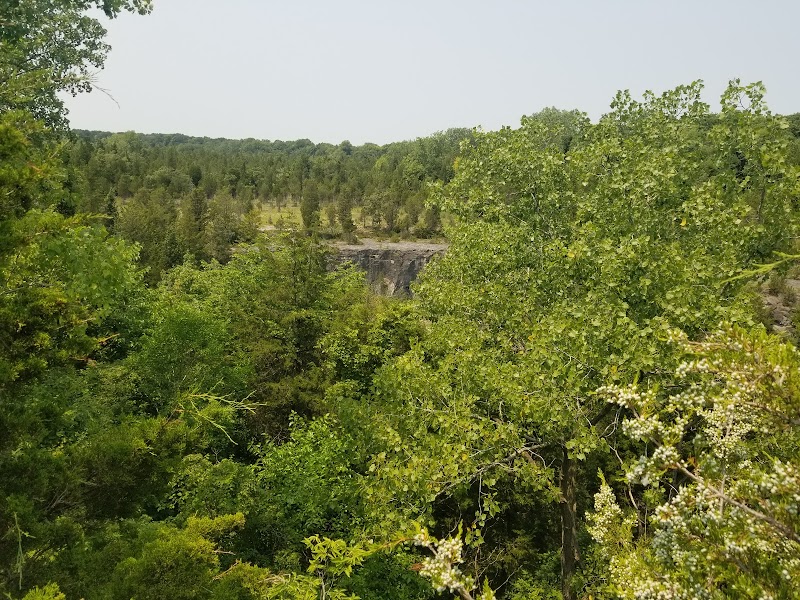
The Glass City Marathon blends a practical running challenge with dynamic urban scenery, offering a 26.2-mile route through Toledo’s downtown and riverside paths. This guide prepares you with insights into course terrain, hydration, and logistics, making it ideal for runners seeking both adventure and a successful race day.
Hydrate Early and Often
Water stations are available every two miles, but begin hydrating before the race and maintain steady intake throughout to avoid fatigue.
Choose Breathable Footwear
Select lightweight running shoes with good support to handle the predominantly asphalt course and reduce the risk of blisters.
Layer for Spring Weather
April in Toledo can vary from chilly to warm; start with layers you can remove easily once your body heats up.
Plan Parking and Arrival
Downtown parking fills quickly; arrive early or use Toledo's public transport to avoid last-minute stress.
Running the Glass City: A Practical Guide to Toledo’s Marathon Adventure
The Glass City Marathon in Toledo, Ohio, offers a dynamic course that challenges runners with its urban pulse mixed with riverside stretches, bridging practical endurance with spirited adventure. Covering a full 26.2 miles, this race threads through Toledo’s heart, weaving past its downtown streets, scenic parks, and alongside the Maumee River, which dares runners to keep pace with its steady current.
The route’s terrain is predominantly flat with slight elevation shifts, making it accessible for both first-timers and experienced marathoners aiming for a personal best. Starting in downtown Toledo, the course presents concrete and asphalt surfaces, but it also briefly touches greener belts and shaded park paths that offer calm respites as the race progresses. Elevation gain stays modest — around 200 feet total — yet the occasional wind gusts off the river remind participants that nature is not a passive spectator but a lively counterpart.
Hydration stations punctuate the course every two miles, equipped with water and electrolyte drinks to keep energy levels buoyant. Runners are advised to prepare with lightweight, breathable footwear and to pace themselves, especially through the middle miles where the race’s rhythm shifts. Early spring temperatures in April usually range from 40 to 60°F, providing cool, crisp air that encourages endurance but calls for layered gear that can be shed as the body warms.
Beyond the physical challenge lies the cultural engagement: cheering crowds energize every segment, local musicians perform at key points, and community volunteers add a layer of warmth to the rigor of competition. The marathon courses past iconic Toledo landmarks such as the Veterans' Glass City Skyway and the Huntington Center, making the run both an athletic and visual experience.
For those planning logistics, downtown Toledo offers approachable accommodations and convenient transit options, allowing runners and spectators alike to immerse themselves fully in the event without logistical stress. Parking can fill quickly on race day, so arriving early or utilizing public transportation is strongly recommended.
Whether you’re chasing a qualifying time or soaking in the city’s energy on race day, the Glass City Marathon demands respect for its physical demands and appreciation for the community spirit it embodies. This course does not simply test your legs; it engages you with a city fiercely itself — tough, proud, and ready to support every stride.
Nearby Trips
All Adventures
Boat Charters
Water Activities
Adventures near Toledo, Ohio
Discover the unique and memorable adventures that make Toledo, Ohio special.
Frequently Asked Questions
What kind of elevation change should runners expect on the Glass City Marathon course?
The course features around 200 feet total elevation gain, mostly flat with slight rises near bridges and park inclines, making it approachable for many skill levels.
Are there any notable spots along the marathon route worth paying attention to?
Yes, notable sites include the Veterans' Glass City Skyway, a shining architectural feature, and the Maumee Riverbank, which offers calm green spaces contrasting the urban stretch.
How can participants best prepare for the spring weather during the race?
Runners should dress in layers, starting with a lightweight jacket or long sleeves, and shed or stow layers as temperature rises. Bring a hat and consider gloves for early chills.
Is public transportation a viable option for race day in Toledo?
Toledo Regional Transit Authority provides routes that service downtown areas, making public transit a practical alternative to crowded race day parking.
What wildlife might be encountered near the marathon parks?
While the city limits the presence of large wildlife, runners might notice squirrels, various songbirds, and waterfowl along the Maumee River corridors.
Are there recommended recovery spots near the finish line?
Downtown Toledo hosts several parks and cafés where runners can cool down and rehydrate while enjoying local hospitality post-race.
Recommended Gear
Breathable Running Shoes
Supportive, lightweight shoes designed for road surfaces help maintain comfort and reduce injury risk on the asphalt-heavy course.
Moisture-Wicking Layers
Layering with moisture-wicking fabric keeps sweat away from skin while adjusting for temperature fluctuations during the race.
Hydration Belt or Pack
While water stops exist, carrying your own small hydration system ensures you stay ahead of thirst and electrolyte loss.
Running GPS Watch
A GPS watch helps monitor pace, distance, and splits, keeping you on track for your target finish time.
Local Insights
Hidden Gems
- "Sidewalk art installations along the River Walk"
- "Lakeside baseball memorial park just a short detour from the main route"
- "Quiet benches under canopy trees in Swan Creek Preserve"
Wildlife
- "Mallard ducks and herons along the Maumee River"
- "Red fox sightings occasionally in adjacent parklands"
- "Migratory songbirds during spring race season"
History
"Toledo earned its nickname 'Glass City' through its rich glassmaking industry dating back to the 19th century, highlighted by landmarks like the Glass Pavilion near the marathon course. The race route highlights this heritage by crossing bridges and paths synonymous with the city's industrial growth and river commerce."
